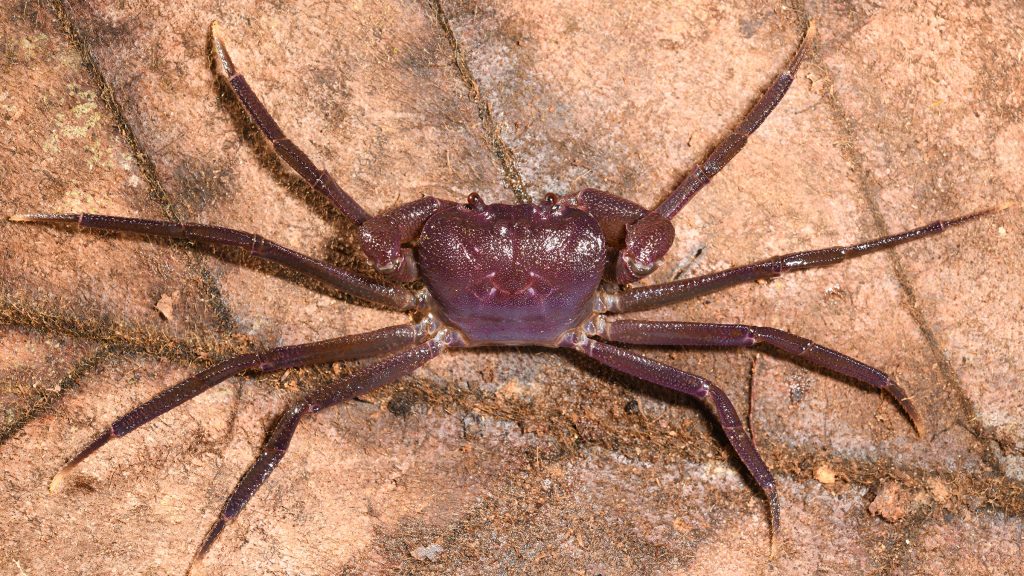News //
A recent expedition into the Lanjak Entimau Wildlife Sanctuary in Sarawak, Borneo has borne the exciting discovery of Arachnothelphusa rimba, a new species of freshwater tree-climbing crab. This discovery was made and named after the RIMBA-Sarawak (Research for Intensified Management of Bio-Rich Areas of Sarawak) initiative, of which the Lee Kong Chian Natural History Museum (LKCNHM) and the Sarawak Forestry Corporation have conducted multiple joint expeditions over the years.

“These are semi-terrestrial crabs (i.e. living partly on land and in water), with really long ambulatory legs to scramble on branches and twigs and potentially can climb up trees,” explained Dr Tan Heok Hui, who photographed the crab specimens after they were brought back from the field.

The encounter with the Arachnothelphusa rimba crabs was a total surprise, according to members of the LKCNHM expedition team. The team had originally set out to look for frogs and snakes.
“One of the nights, we explored a trail that was just behind our campsite. Several species of frogs inhabit water-filled tree holes so I make it a habit to inspect every tree hole that I encounter. The first tree hole we found was quite near to the campsite. As soon as I shone my torch light into the hole, I saw a large crab retreat and submerge into the water. The water was murky so it essentially disappeared,” shared Dr Chan Kin Onn, curator of herpetology at LKCNHM.
After successfully nudging the first crab out of the tree hole, the team found a second specimen an hour or so later farther up the trail. Elaborating on these discoveries, Dr Chan spoke of the crabs as a fascinating find because the trail was not close to any water body—in fact it was on an incline up a hill in the opposite direction of the river.
“Crabs, especially large ones like these are usually associated with water so it was interesting to find this along a terrestrial trail. It may have evolved this unique adaptation to living in tree holes to avoid competition with other crabs,” Dr Chan explained.
This finding, alongside the discovery of another new species of freshwater crab from the same genus, was published by Professor Peter Ng, a carcinologist and the Head of LKCNHM, in Zootaxa on 6 August 2021. These species discoveries brings Sarawak’s freshwater crab diversity to at least 51 species, and were also featured on an article in the Borneo Post on 9 August 2021.